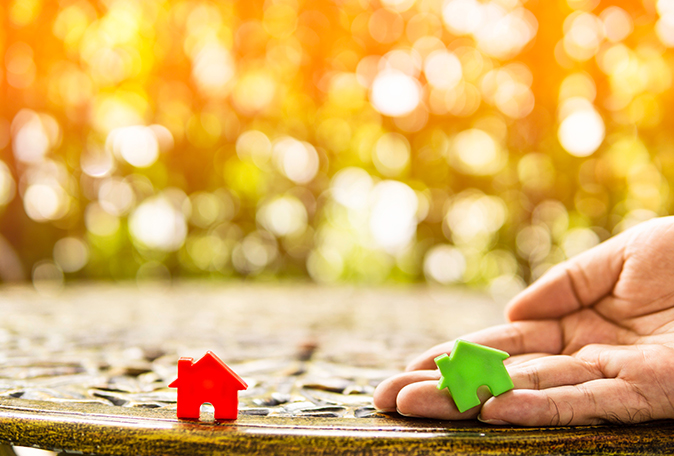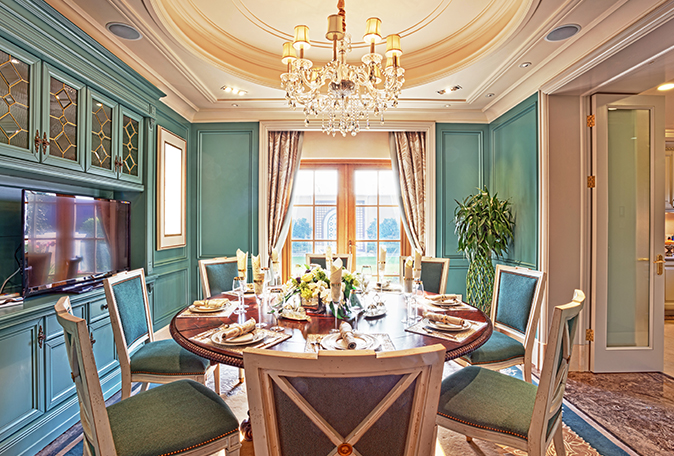Embracing flexibility in home design allows for adaptable spaces, enhancing sustainability, personal well-being, and future resale value.
Embracing flexibility in your home design can revolutionize your living experience. It’s about creating a space that adapts to your changing needs over time, whether it’s family dynamics, remote work, or the pursuit of new hobbies. Flexible designs foster resilience, enabling your home to efficiently respond to environmental challenges, such as extreme weather patterns exacerbated by climate change. It’s about smart planning, creating spaces that can serve multiple functions, like a guest room doubling as a home office. It means opting for modular furniture that can be reconfigured as needed, reducing waste and saving money. Furthermore, adaptable spaces can enhance your personal well-being, providing opportunities for natural light and increased air quality. Lastly, flexible homes offer potential for higher resale value, proving appealing to a wider range of potential buyers. Be open to innovation and flexibility in your home; it’s an investment in your future, the planet’s health, and the well-being of generations to come.
Key Concepts:
1Sustainability
Flexibility is crucial for building homes with sustainability in mind. In the face of changing climates and energy consumption patterns, homes need to be built or renovated to adapt to these changes. From embracing solar power and efficient insulation to creating vegetable gardens for self-sustenance, there are countless ways to create flexible, sustainable homes. The ability to adapt and respond to environmental conditions and changes means lower carbon footprints and decreased energy costs, which directly contribute to the goal of decarbonization. Flexible homes that are designed for sustainability use resources efficiently, which in turn reduces the home’s environmental impact. Sustainable features can include solar panels, rainwater collection systems, composting facilities, and energy-efficient appliances.
Fact: According to the U.S. Department of Energy, properly insulated homes can save up to 20% on heating and cooling costs.
2Adaptable Spaces
Houses should be designed or modified to accommodate changing needs. Homes should be spaces where one can grow, start a family, work, retire, or recover from illness. Bedrooms can be easily converted into offices or study spaces, while living rooms can host overnight guests with the help of convertible furniture. Adaptable spaces give us the room to evolve without requiring expensive and wasteful renovations. Adaptable spaces can be reconfigured to serve different functions, accommodating lifestyle changes over time. This could mean converting a spare bedroom into a home office, or creating a play area that can later become a study space.
Fact: According to a survey by HomeAdvisor, 61% of homeowners are considering renovations to make their homes more suitable for remote work.

3Modular Design
A flexible home embraces modular design, making it easier to change and adapt spaces without structural changes. Modular furniture can be rearranged, expanded, or reduced as needed. This saves money, reduces waste, and offers an easy way to refresh your space regularly. Modular design allows for easy changes without major renovations. By selecting modular furniture, homeowners can transform spaces efficiently as needs change, reducing waste and cost.
Fact: Modular construction can reduce build time by up to 50%, according to the Modular Building Institute.
- “Prefabulous Small Houses” by Sheri Koones.
4Energy Efficiency
Flexibility and energy efficiency go hand in hand. With adaptable solar panels, programmable thermostats, and energy-efficient appliances, you can flexibly manage your home’s energy use. This leads to lower bills, less waste, and a smaller carbon footprint, making your home a part of the solution to climate change. An energy-efficient home can reduce energy consumption and contribute to a lower carbon footprint. Programmable thermostats, energy-efficient lighting and appliances, and proper insulation are key features of such homes.
Fact: ENERGY STAR certified light bulbs use 70-90% less energy than traditional bulbs, according to the U.S. Environmental Protection Agency.

- “The New Net Zero: Leading-Edge Design and Construction of Homes and Buildings for a Renewable Energy Future” by Bill Maclay.
5Resilience
Resilience is a vital aspect of flexible home design. Building materials should be chosen not only for their environmental impact but also for their longevity and ability to withstand severe weather conditions. This is particularly relevant in areas prone to natural disasters, where homes must be flexible enough to withstand and recover from these events. Resilient homes are designed to withstand extreme weather conditions and climate changes. This could involve using durable materials, incorporating flood-resistant design, or installing impact-resistant windows.
Fact: According to the Federal Emergency Management Agency, every dollar spent on hazard mitigation can save six dollars in future disaster costs.
6Technology Integration
In the digital age, flexibility means a home’s ability to integrate and adapt to technological advancements. Smart home technologies, for instance, enable homeowners to control various aspects of their homes remotely, thereby improving energy efficiency, safety, and convenience. Technology can increase a home’s flexibility by allowing for remote control of lighting, temperature, security, and other features. Smart home technology can also help improve energy efficiency and accessibility.
Fact: The global smart home market is projected to reach $622 billion by 2026, indicating growing consumer interest in home automation.

- “Smart Homes For Dummies” by Danny Briere, Pat Hurley.
7Accessibility
An often overlooked aspect of flexibility is the ability to accommodate individuals with varying physical abilities. This includes incorporating universal design principles, which allow people of all ages and abilities to use the space safely and independently. Such modifications not only increase the home’s flexibility but also its value and appeal. Accessible design allows people of all ages and abilities to use a home safely and independently. This includes wider doorways for wheelchair access, grab bars in bathrooms, and single-level design for easier navigation.
Fact: One in four U.S. adults lives with a disability, according to the CDC, emphasizing the importance of accessible design.
8Financial Sustainability
Financial sustainability is achieved when a home can adapt to market changes and varying financial situations. This can mean having an extra room to rent out for additional income or having the capacity to downsize living spaces to save on maintenance costs. Financial sustainability in home design allows for changes in economic circumstances. Rentable spaces, affordable maintenance features, and energy-efficient installations can contribute to financial stability.
Fact: A Zillow study showed that homeowners can cover more than half of their mortgage payments by renting out a single room.

- “How to Set Up and Run a Successful Airbnb Business: Outearn Your Competition with Skyrocketing Rental Income and Leave Your 9 to 5 Job Even If You Are an Absolute” by Frank Eberstadt.
9Community Engagement
A flexible home promotes community engagement by providing spaces that can be shared with neighbors and friends. This might be a front porch that fosters social interactions or a backyard that can host neighborhood gatherings. This can also support a more sustainable and resilient community. Flexible homes can foster community engagement through shared spaces, like gardens or communal dining areas. This can support a sense of belonging and contribute to communal sustainability efforts.
Fact: Research from the University of Oxford found that social connections can improve physical health and mental wellbeing as much as quitting smoking.
10Natural Connection
Lastly, a flexible home maintains a strong connection with nature. This means designing homes to maximize natural light and ventilation, which not only reduces energy costs but also promotes health and wellbeing. Furthermore, having spaces that can be opened up to the outdoors provides flexibility for indoor-outdoor living. Homes that maintain a connection with nature support health and wellbeing. Features like large windows, outdoor living spaces, and indoor plants can improve air quality and mood.
Fact: Studies show that exposure to nature can reduce stress and boost mood, making it a vital component of home design.

- “The Sustainable Sites Handbook: A Complete Guide to the Principles, Strategies, and Best Practices for Sustainable Landscapes” by Meg Calkins.
In the face of ongoing social and environmental changes, the concept of flexibility in home design and renovation has become critical. It provides a way to make our homes more adaptable, more efficient, more sustainable, and more resilient. By embracing flexibility, we can create homes that not only serve our current needs but can also evolve with us over time, contributing positively to our planet and our communities.
Special Considerations for Affordable Housing Projects:
1Adaptable Design
The most critical consideration for flexibility in affordable housing is adaptable design. Spaces should be designed to be multifunctional and adjustable to changing needs, such as transforming living areas into workspaces or children’s play areas. This adaptability can maximize use of limited space and accommodate changing family dynamics.
2Energy Efficiency
Energy efficiency is essential for keeping utility costs down and providing long-term affordability. Consider installing energy-efficient appliances, proper insulation, and programmable thermostats. Utilizing renewable energy sources like solar panels can also help reduce monthly expenses.
3Durability
Choosing durable, low-maintenance materials is vital for affordable housing. These materials should withstand regular wear and tear without requiring expensive repairs or replacements, ensuring the home remains affordable over the long term.
4Accessibility
Affordable housing should be designed to be accessible to people of varying ages and abilities. Implementing universal design principles such as no-step entries, wider doorways, and grab bars in bathrooms ensures the home remains suitable for occupants as their physical needs change.
5Community Connection
Affordable housing should foster a sense of community and belonging. Shared communal spaces, proximity to public transit, schools, and amenities, and integration into the larger neighborhood are all crucial. This connection can enhance residents’ quality of life and provide opportunities for social support and engagement.






